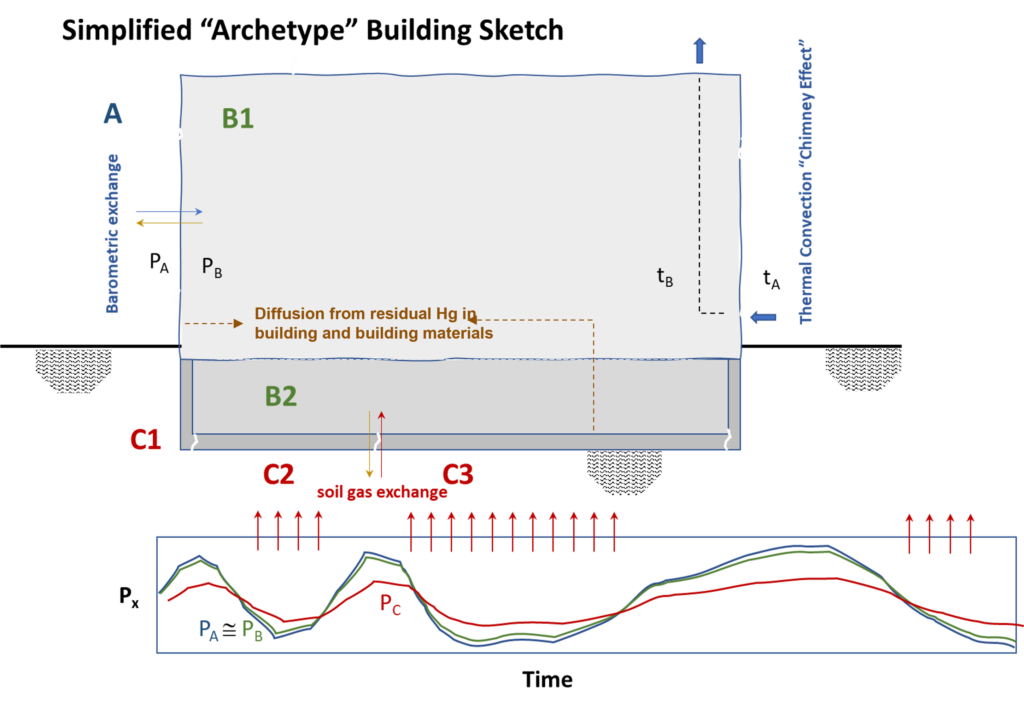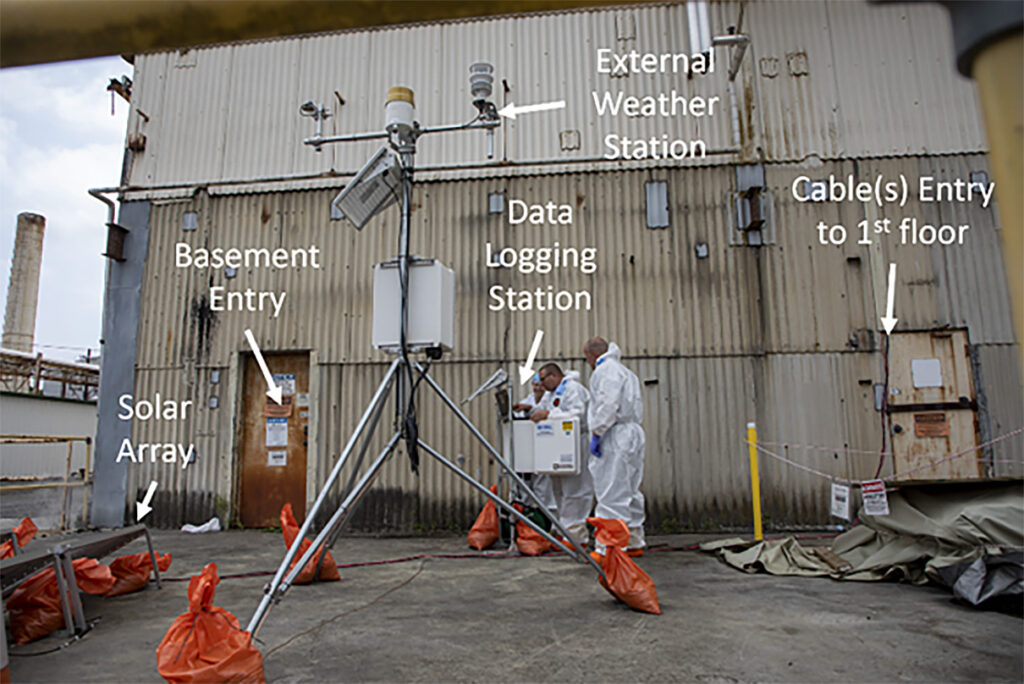Improving Worker Safety and Reducing Deactivation and Decommissioning Delays
Improving Worker Safety and Reducing Deactivation and Decommissioning Delays:
Mercury Analyzer with Meteorological Sensor Identifies Mercury Contaminant Trends at Y-12 Alpha-4 Building
The Mercury Problem
- In the 1950s and early 1960s, more than 10 million kilograms of mercury were used for lithium isotope separation at the Oak Ridge Y-12 National Security Complex.
- Mercury released within the former process buildings is significant and poses risks to workers performing Deactivation and Decommission (D&D) activities.
- Mercury settled into cracks and seams inside Y-12 structures, creating a persistent reser-voir of contamination subject to conditional release. Mercury also diffused into permeable materials at Y-12.
Mercury’s Impact on D&D
- Remediation activities for removal of residual mercury sources include demolition of past processing facilities. However, variations in gaseous mercury levels can routinely exceed exposure limits and impact legacy material removal/disposition activities.
- Mercury vapor levels in Y-12 facilities are intermittent and the controlling mechanism(s) for the variability is poorly understood. This includes the release mechanisms and conditions that control the migration of vapors from latent sources to D&D workers.
Fast Facts
- The levels of mercury vapors are intermit-tent, and the controlling mechanism(s) is poorly understood.
- Sensor packages measured mercury levels in the ambient air, along with potential meteorological controlling variables at a high frequency.
- Mercury sensors were deployed at four locations inside of the Alpha-4 building; meteorological data were collected within and outside of the building.
- Emphasis on artificial intelligence and machine learning to predict future exceedance of Hg exposure limits.
How mercury behaves in a decommissioned building
A conceptual model highlights potential mechanisms influencing mercury vapor exchange and mercury concentration levels within a decommissioned building.
Key aspects of the conceptual model include:
- above ground barometric exchange
- above ground thermal convection
- below ground barometric exchange
- direct volatilization and diffusion of elemental mercury
The archetype building assumes properties of Y-12 facilities with legacy use of mercury, including large volume, poor sealing to the outside, and lack of an HVAC system. It is also assumed that past spills within the building seeped into floors, cracks, and seams that act as residual mercury sources from which additional mercury vapors diffused into building materials and surfaces.

Our Approach
- Commercial meteorological sensors and mercury vapor analyzers were deployed within the Alpha-4 legacy-use facility to evaluate the role of basic meteorological parameters.
- Mercury sensors were deployed at four locations inside of the Alpha-4 building, while meteorological data were collected within and outside of the building. This approach allowed for the collection of a high-resolution data suite.
- Data were collected at a high frequency for several months.
- Subsequent use of advanced data analytics, including artificial intelligence/machine learning technologies, allowed for identification of volatile mercury contaminant trends and controlling variable(s). The analytics also provide the potential to forecast hazardous levels of mercury. SRNL-STI-2022-00577 provides a detailed description of the conceptual model, package development, and preliminary results.

Download Fact Sheet
Contact Information
Jennifer Wohlwend
jennifer.wohlwend@srnl.doe.gov